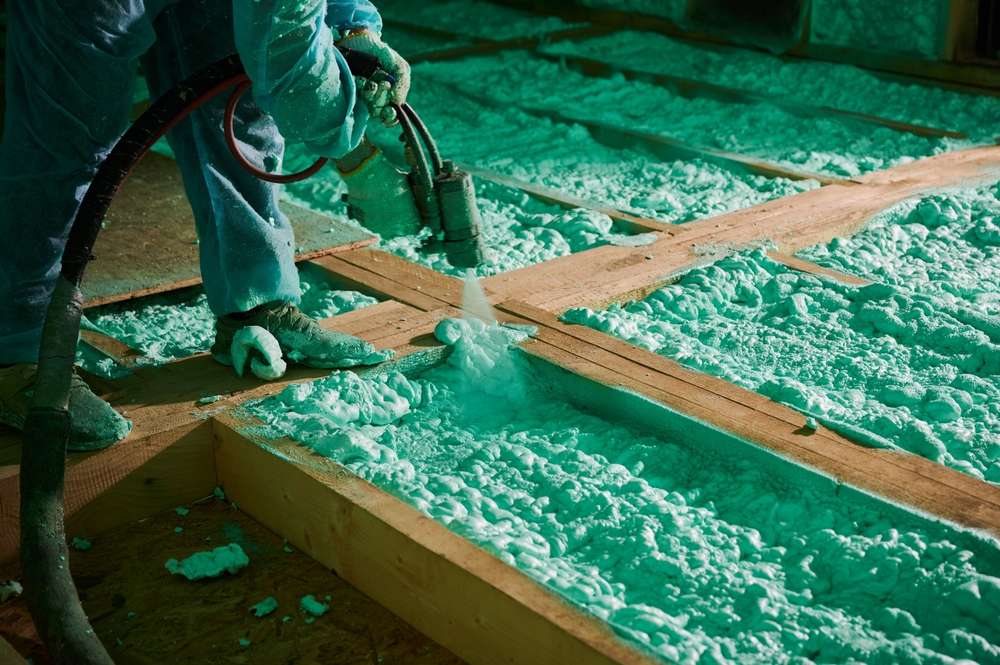Spray Foam Insulation for Homes: Energy-Efficient Construction
Spray foam insulation has become a popular choice for modern homes and construction projects because it combines thermal resistance with airtight sealing. Unlike traditional batt insulation, spray foam expands to fill cavities and cracks, reducing drafts and energy loss. Understanding how it works, its pros and cons, and what to expect during installation helps homeowners and builders choose the right approach for long-term comfort and efficiency.

What is spray foam insulation?
Spray foam insulation is a polyurethane-based material applied as a liquid that rapidly expands and hardens into a foam. There are two main types: open-cell, which is softer and more flexible, and closed-cell, which is denser with higher R-value per inch. Both types provide a continuous barrier that reduces convective heat transfer and air leakage. Because spray foam adheres to surfaces and fills irregular voids, it is especially effective in attics, crawlspaces, and rim joists where traditional insulation can leave gaps.
How spray foam boosts energy efficiency
Spray foam improves energy efficiency by combining insulation and air sealing in one step. By preventing air infiltration, it stops warm or cool air from escaping the conditioned space, which reduces heating and cooling loads on HVAC systems. Closed-cell foam also offers some moisture resistance and structural reinforcement, while open-cell foam excels at sound dampening. When properly installed, spray foam often leads to measurable reductions in energy use and improved comfort, but performance depends on correct installation, appropriate thickness, and integration with ventilation systems.
Is spray foam right for your home?
Choosing spray foam for a home depends on climate, budget, and the specific areas needing treatment. Homes with complex framing, many penetrations, or persistent drafts often see the most benefit because spray foam conforms to irregular shapes. In mild climates, open-cell foam may be sufficient and cost-effective; in colder or flood-prone areas, closed-cell foam’s higher R-value and moisture resistance might be preferable. It’s important to balance long-term energy savings and durability against upfront installation costs and to consult qualified local services for an assessment tailored to the home’s construction and goals.
Spray foam in construction: benefits and limits
In construction, spray foam is valued for speed of application, insulation continuity, and improved building envelope performance. It can reduce thermal bridging when applied to exterior sheathing and can be part of high-performance wall assemblies. However, limitations include the need for professional installation to ensure proper mixing and adhesion, potential difficulties with future renovations (removing or altering foam can be labor-intensive), and sensitivity to installation conditions like temperature and humidity. Building codes and fire-safety requirements also influence where and how foam can be used in assemblies.
Installation, maintenance, and health considerations
Professional installers typically assess cavities, air barriers, and ventilation before applying spray foam. Proper PPE, ventilation, and curing time are essential during installation to minimize exposure to isocyanates and other chemicals. Once cured, most spray foam is inert, but occupants should avoid prolonged presence in the work area until curing is complete. Maintenance is minimal; periodic inspections for moisture intrusion or mechanical damage are recommended. This article is for informational purposes only and should not be considered medical advice. Please consult a qualified healthcare professional for personalized guidance and treatment.
Conclusion
Spray foam insulation offers a high-performance option for homeowners and builders seeking improved energy efficiency and airtightness. Its ability to seal gaps and provide significant R-value per inch makes it attractive for hard-to-insulate spaces and for projects aiming to reduce HVAC loads. Weigh the benefits of open-cell versus closed-cell foam against installation requirements, building codes, and long-term goals. Consulting experienced local services and reviewing assembly details will help ensure spray foam contributes effectively to a durable, energy-efficient building envelope.






